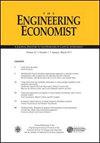Economic viability of foreign investment in railways: a case study of the China-Pakistan Economic Corridor (CPEC)
IF 1
4区 经济学
Q4 BUSINESS
引用次数: 12
Abstract
Abstract Pakistan Railways has faced a severe financial crisis in recent years. Pakistan has recently become a partner with China in a mega-investment project under an agreement called the China-Pakistan Economic Corridor (CPEC). Among other things, CPEC also includes a range of investments in Pakistan Railways. This particular study focuses on the analysis of US$8.2 billion investment in the upgrade and expansion of the Karachi-Peshawar railways link, which is also known as the ML-1 (Main Line 1). The study found ML-1 as economically viable with a payback period of 10 years. Furthermore, ML-1 project investment is expected to result in uplifting Pakistan Railways, mainly through an increase in freight and passenger transportation. Some risk factors may hinder the expected economic return from the CPEC investment in Pakistan Railways. These factors include consistency in the government policies, the status of the Pakistani economy in upcoming years, and law and order situations in the country. The study has a utility for the governments of both countries and larger business communities have stakes in the trade between the two countries. It is equally beneficial for the international community, businesses (both in China and Pakistan) and locals of the region associated with the CPEC infrastructure.外商投资铁路的经济可行性——以中巴经济走廊为例
摘要近年来,巴基斯坦铁路公司面临着严重的金融危机。根据一项名为中巴经济走廊(CPEC)的协议,巴基斯坦最近与中国成为一个大型投资项目的合作伙伴。除其他外,CPEC还包括对巴基斯坦铁路公司的一系列投资。这项特别研究的重点是对卡拉奇-白沙瓦铁路线升级和扩建投资82亿美元的分析,该铁路线也被称为ML-1(主线1)。研究发现ML-1在经济上可行,投资回收期为10 年。此外,ML-1项目投资预计将主要通过增加货运和客运来提升巴基斯坦铁路。一些风险因素可能会阻碍CPEC投资巴基斯坦铁路公司的预期经济回报。这些因素包括政府政策的一致性、未来几年巴基斯坦经济的状况以及该国的法律和秩序状况。这项研究对两国政府和在两国贸易中有利害关系的大型企业界都有用。这对国际社会、企业(中国和巴基斯坦)以及与CPEC基础设施相关的该地区当地人同样有利。
本文章由计算机程序翻译,如有差异,请以英文原文为准。
求助全文
约1分钟内获得全文
求助全文
来源期刊

Engineering Economist
ENGINEERING, INDUSTRIAL-OPERATIONS RESEARCH & MANAGEMENT SCIENCE
CiteScore
2.00
自引率
0.00%
发文量
14
审稿时长
>12 weeks
期刊介绍:
The Engineering Economist is a refereed journal published jointly by the Engineering Economy Division of the American Society of Engineering Education (ASEE) and the Institute of Industrial and Systems Engineers (IISE). The journal publishes articles, case studies, surveys, and book and software reviews that represent original research, current practice, and teaching involving problems of capital investment.
The journal seeks submissions in a number of areas, including, but not limited to: capital investment analysis, financial risk management, cost estimation and accounting, cost of capital, design economics, economic decision analysis, engineering economy education, research and development, and the analysis of public policy when it is relevant to the economic investment decisions made by engineers and technology managers.
 求助内容:
求助内容: 应助结果提醒方式:
应助结果提醒方式:


